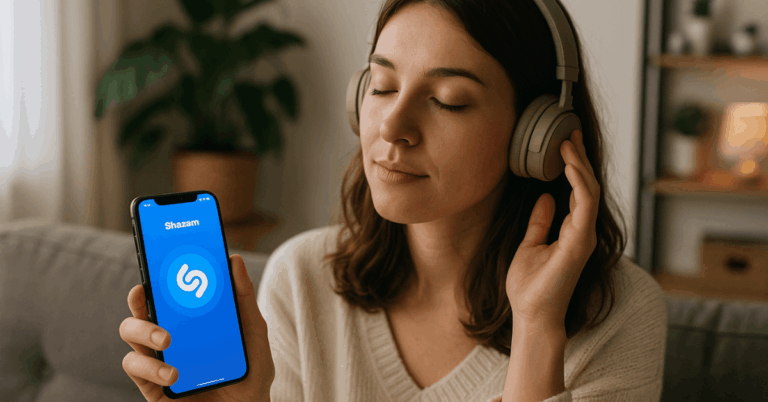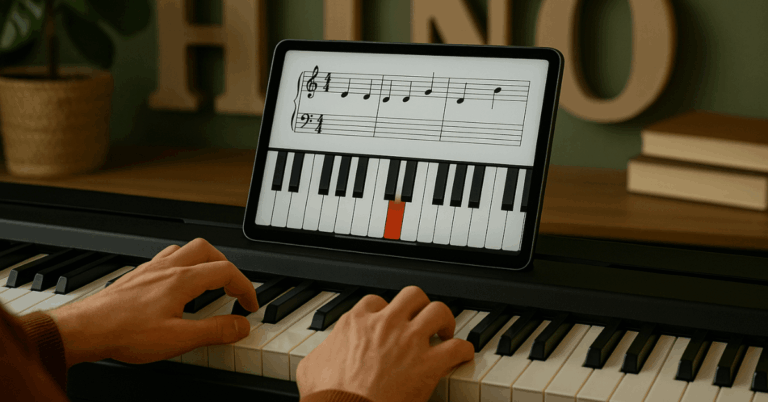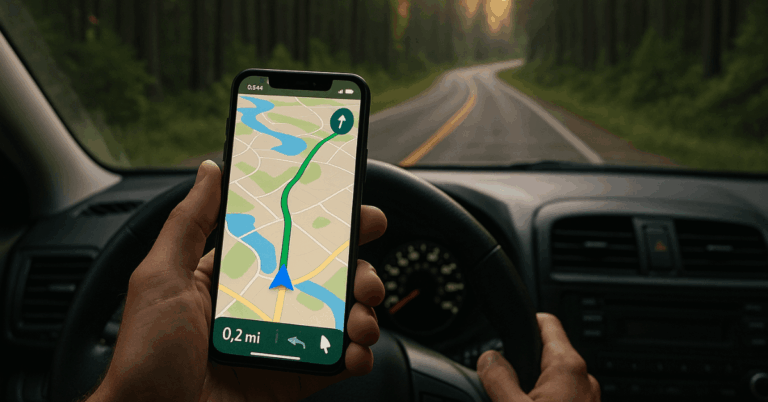Playing guitar is now more accessible thanks to modern technology. With the best guitar learning app at home, you can practice chords, riffs, and songs at your own pace.
These apps offer structured lessons ideal for beginners and casual players. This article highlights top tools and strategies to help you learn quickly and effectively.
Why Learn Guitar at Home?
You can learn on your schedule without commuting or scheduling lessons. Apps let you take things at your own pace, which makes the learning process less stressful.
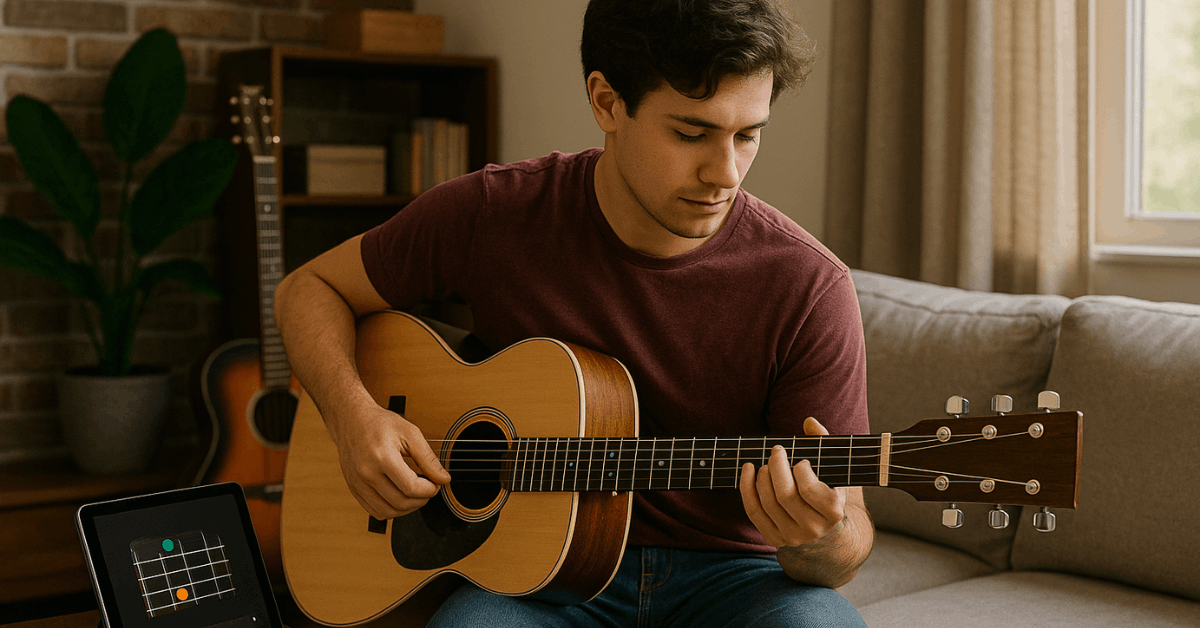
Most apps provide real-time feedback and structured lessons. This means you can make measurable progress every week.
The Flexibility of Home Practice
Practicing at home gives you total control of your environment. You can practice in your room, on the couch, or even in your backyard.
You choose the time, so it fits around your lifestyle. You also avoid performance anxiety that often comes with in-person lessons.
Benefits Over Traditional Lessons
Traditional lessons often cost more and require fixed schedules. Apps offer tutorials and guidance without the pressure.
You can rewind videos or revisit a lesson whenever you want. This makes learning consistent and effective.
What Makes a Great Guitar Learning App?
Apps must be user-friendly and include practical features. You’ll want real-time feedback, visual tutorials, and a wide range of song lessons.
These tools speed up your learning curve. Let’s go over what you should expect from a quality guitar app.
Core Features to Look For
Every app should offer clear, step-by-step lessons. Video guides are helpful for understanding hand placement and rhythm.
Look for built-in tuners, chord libraries, and metronomes. These tools are essential for beginners and self-learners.
User-Friendly Interface
A clean interface helps you focus on learning. Controls should be simple to use, especially for beginners.
Good apps adjust to your skill level and show progress stats. This helps you stay motivated and track improvements.
Top 4 Guitar Learning Apps to Use at Home
These apps are popular for their lessons, usability, and results. All are available on both Google Play and App Store.
Each offers a slightly different teaching method, so choose what suits you best. Here’s a quick guide to help you decide.
Yousician
Yousician uses gamified lessons and feedback. You play along with your guitar and get scored on accuracy.
Lessons are well-structured and cover various styles. You can learn acoustic, electric, or bass guitar. You can find this on both Google Play and the App Store.
Justin Guitar
Justin Guitar is great for beginners. The lessons follow a structured course created by Justin Sandercoe.
The app includes practice schedules, play-along tracks, and video lessons. It feels like having a personal teacher. Available for download via Google Play and the App Store.
Fender Play
Fender Play is backed by one of the biggest names in guitars. The lessons are short, easy to follow, and cover multiple genres.
The app includes skills, songs, and chord exercises. It also tracks your progress visually. Download it on Google Play and the App Store.
GuitarTuna
GuitarTuna is more than a tuner. It has mini-games, chord training, and beginner tools. This app is great for warming up or reviewing skills.
It’s ideal for new learners needing basic support. Accessible through both Google Play and the App Store.
How to Set Up Your Guitar Space at Home?
Your learning space matters more than you think. A proper setup helps you focus and avoid distractions. Keep your area organized and comfortable. Here are key things to include.
Choose the Right Spot
Pick a quiet place where you won’t be disturbed. A chair with back support is ideal for long sessions.
Make sure the lighting is suitable for reading tabs or watching videos. Keep your guitar on a stand nearby.
Tools You’ll Need
You don’t need much, but a few tools help. A tuner (or app), guitar picks, and a capo are great starters.
Consider using a music stand or tablet holder for your phone. Keep your accessories within reach.
Tips for Making Fast Progress With Apps
Speeding up your progress requires structure. Many users lose momentum without a clear plan.
These tips will help you stay committed and level up faster. Use your app’s features to stay on track.
Stick to a Routine
Practice at the same time daily, even for 20 minutes. Use app reminders or calendar alerts.
Follow the lesson plan inside your chosen app. Small, consistent efforts lead to strong improvement.
Combine Practice With Theory
Don’t just play songs. Learn what chords and scales mean. Apps often include music theory sections—use them. This builds deeper knowledge and better long-term skills.
Common Mistakes to Avoid
New learners often skip essentials or lose focus. Avoiding common pitfalls can help you improve faster. Stick to your course and avoid rushing. Here are common mistakes you should avoid.
Skipping the Basics
Jumping ahead may lead to frustration. Start with chords, strumming, and tuning. Basics build the foundation for everything else. Follow the beginner path before trying advanced skills.
Not Practicing Regularly
Inconsistent practice weakens your progress. You lose finger memory and coordination.
Set reminders or use app streaks to stay active. Daily practice, even short, is better than long gaps.
How to Stay Motivated While Learning?
Staying motivated is key to long-term success. Apps offer several ways to keep your interest alive. You just have to use them actively. Here are simple methods to stay driven.
Use App Challenges and Rewards
Many apps reward consistency. Take part in weekly goals or point-based systems. Some include fun mini-games that keep it interesting. These features add energy to your practice.
Track and Celebrate Progress
Watch your skill stats or video logs. Recording yourself can show real growth. Share small wins with friends or online communities. Celebrating progress keeps the fire burning.
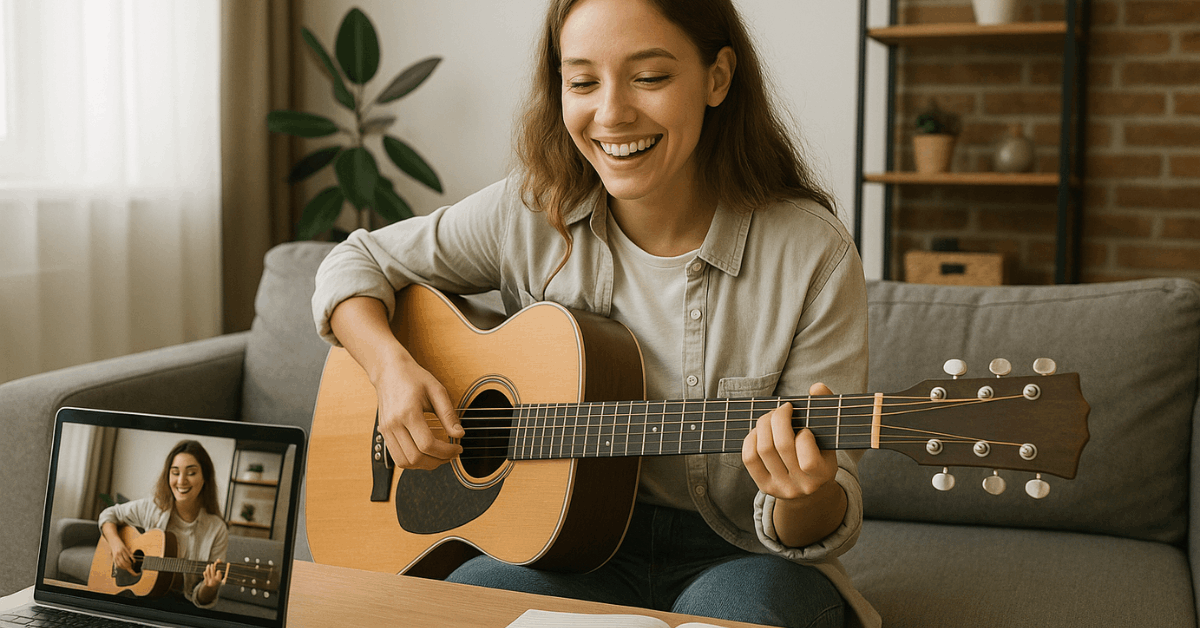
Learning Acoustic vs. Electric Guitar at Home
Both types of guitar offer unique benefits. The choice affects your app settings and learning curve. Here are the core differences to help you decide. Your app will usually support both.
Key Differences in Technique
Acoustic guitars are harder to press and require more finger strength. Electric guitars allow quicker fretting and cleaner slides.
Sound and technique vary, but basics remain similar. Choose based on your musical goals.
App Support for Both Types
Most apps let you choose your guitar type. Lessons may adapt based on your selection.
Adjust tone settings in the app if needed. This helps match what you hear to your playing.
When to Consider Upgrading or Getting a Teacher
Apps can take you far, but not all the way. A teacher can help fix your form and boost your progress. Here’s when to consider outside help. Use both for a more substantial experience.
When You Hit a Learning Plateau?
If you’re not improving after weeks of practice, consider getting help. A real teacher can spot technique issues you may miss. Feedback is faster and more tailored. You’ll break out of your rut faster.
Combining Apps With Private Instruction
Use the app for daily drills and songs. Meet with a teacher weekly for critique and deeper training.
This combination works well for intermediate learners. You get the best of both methods.
Final Thoughts: Start Learning Guitar at Home Today
Using the best guitar learning app at home makes practice simple and effective. These tools provide structured lessons, real feedback, and easy-to-follow guidance.
They are ideal for anyone starting from scratch or picking up where they left off. Stay committed daily, and you’ll improve steadily.


